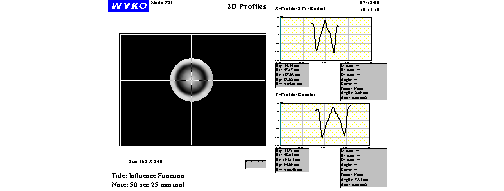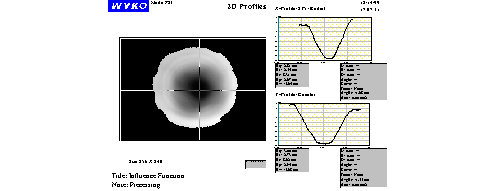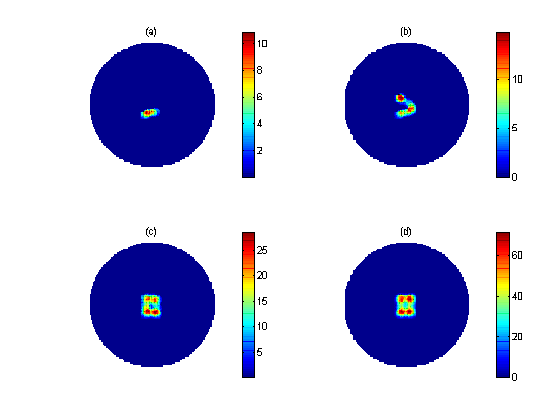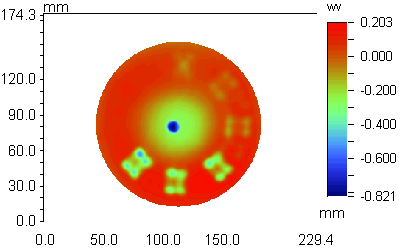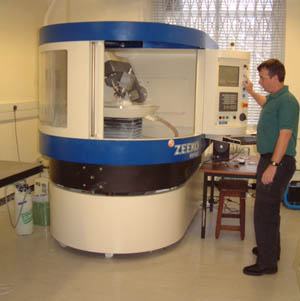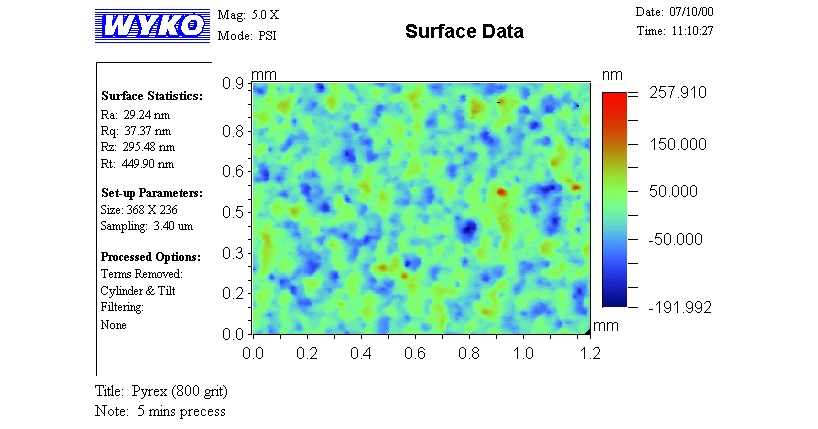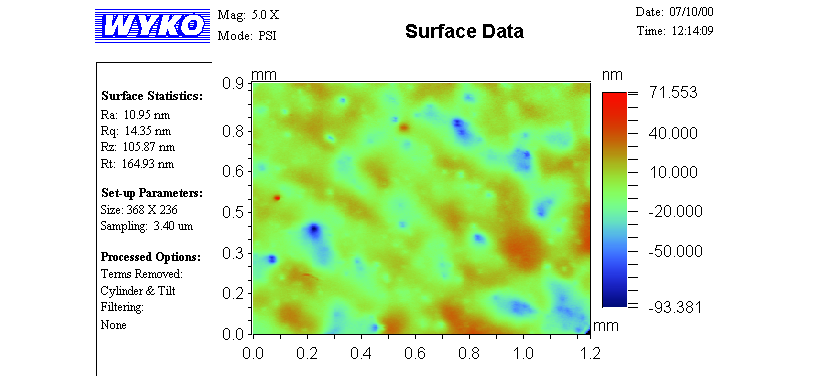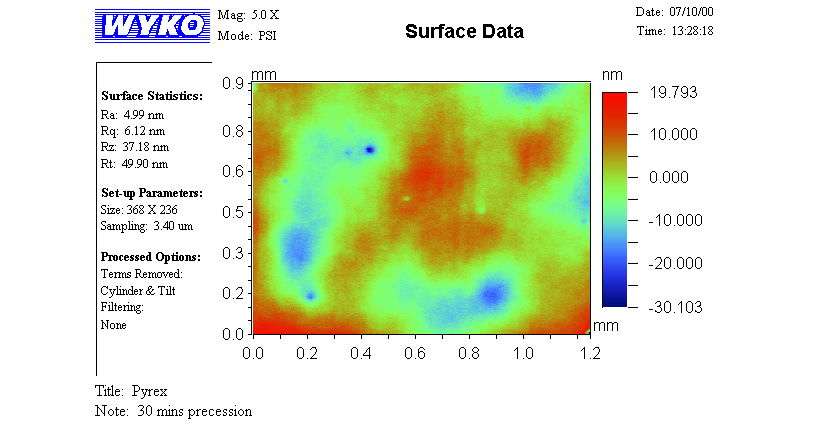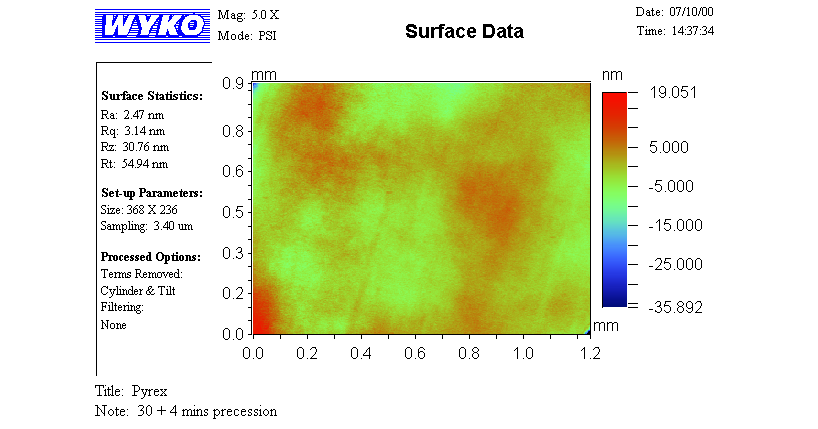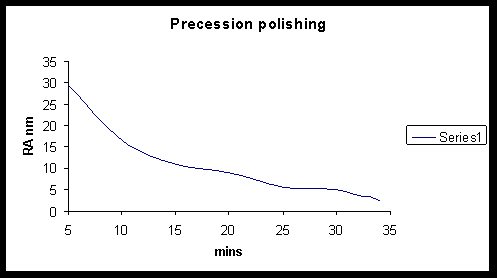Production Technology for Small to Medium AsphericsAspherics confer substantial advantages to the optical designer, permitting more highly-corrected imaging performance to be achieved with fewer optical surfaces, in more compact and lower mass packages, and with improved stray light. However, the take-up of aspherics in optical instrumentation systems and consumer products has been restricted by the difficulty, time and cost of producing the aspheric surfaces. Diamond turning and grinding have made great strides, but are still not at the stage where high-quality optics for the visible and UV can be produced routinely and directly, particularly in the moderate sizes demanded by many sectors, such as defence, photolithography and cine. Polishing is required in order to achieve high-quality surface texture. OSL has been addressing the challenges of computer controlled polishing of aspherics for more than ten years, starting out at the large-scale required for astronomical telescopes. At the present however, OSL is concentrating on more modest-sized aspherics, working in close collaboration with the company Zeeko Ltd. The joint vision is to exploit an innovative and effective technology (under patent protection), in order to make aspherics economical for routine applications, and easier to acquire for demanding applications.
Zeeko Ltd was formed in May 2000. It has licensed technology from both UCL and from the original (1994) UCL spin-out, formerly called Optical Generics Ltd (now Optical Investments Ltd). Zeeko specialises in process R&D, machine design, integration and commissioning, and marketing. Manufacturing is based at the premises of Eley Metrology Ltd, and is undertaken through a partnership with them. (Eley Metrology may be found at Beaufort House, Beaufort Court, Mansfield, Derby, DE21 4FS. The process that has been developed by Zeeko and OSL is based on a small-tool polisher and seven axis motion control, and can address convex, concave, flat or conformal surfaces. These may be optical surfaces, or engineering surfaces such as bearings, prosthetic joints or turbine blades. A key part of the development has addressed the 'tool influence function' (ie the three-dimensional depression left by the spinning tool as it presses into a piece of glass). In the case of a traditional face-down spinning tool, this has sharp features due to the central zero speed, rising to a maximum at the periphery. This is clearly shown in the measurement below, in which such a tool was simply pressed into a piece of polished glass and the form of the depression so made was measured. |
|
|
|
|
| Influence function of traditional spinning face-down tool |
|
| The new process has four principal innovations: 1. A spinning, inflated membrane tool of variable size, rotation-rate and applied pressure. This gives independent control over the spatial frequencies addressed on the surface, the removal rate, and the surface texture produced. 2. Precessing of the tool's spin axis about an axis inclined to the local work-piece normal. This results in a tool influence function (ie the three-dimensional depression left by the spinning tool as it presses into a piece of glass), that is ideal for form-control. Furthermore the precessing tool rubs the surface in every direction, optimising surface texture. |
|
Influence function of new spinning, precessing tool |
|
3. Form control algorithm that can optimise for surface slope as well as surface height. 4. In-process monitoring. Sensors monitor the process variables that control removal-rate. This information is used to predict in real-time the local removal-rate on the surface. This is numerically integrated to give a prediction of the current surface form - displayed to the user by graphical maps. It can also be used to compensate for any process variability whilst polishing. |
|
|
|
|
| Real-time simulation: progress local-polishing a square region |
Experimental results polishing squares |
| Highlights of the process development to date are as follows:
Zeeko's design for the first production machine embodying the above process is almost complete, and manufacture has started by Zeeko's partner Eley Metrology Ltd. The first 200mm capacity machine is expected to be assembled in October 2000, with a 600mm machine to follow thereafter. Meanwhile, OSL is continuing process development under a PPARC industrial programme support scheme award.
|
|
| The IRP-600 in Zeeko's family of machines
|
|
Precession polishing of 800-grit ground-glass surface |
|
| Measurements with Wyko RST-500 surface texture interferometer |
|
|
|
|
| Ra~30nm after polish cycle #1 |
after polish cycle #2 |
|
|
|
| after polish cycle #3 |
Ra<2.5nm after polish cycle #4 |
|
|
|
